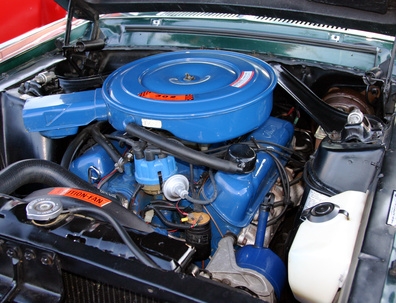
Modern Ford engines have a computer controlled ignition system. This system, also known as a Power Control Module (or PCM) uses throttle position, engine RPM, mass airflow sensor readings, coolant temperature and load to determine the optimum ignition firing point. The only adjustable setting is the base ignition timing. Setting the ignition timing will improve fuel economy and the overall performance of your truck. These steps also apply to Ford pick-up trucks between the years 1990 to 1996, with the exception of the Explorer.
Locate the emissions data label. The emissions data on a 1995 Ford truck will be on the radiator core support or fan shroud. Make note of the following specifications (which, in our example, apply to a 5.8-liter engine):
Spark plug: AFS 32C .042-.046
Ignition timing: 10* BTDC
Engine size: 5.8 SFM1065AYC0A
Emission components: REDOX/AIR/H2OS/EGR/SFI
Locate the timing chain cover and crankshaft dampener notch. Wipe the timing plate clean and use white paint or "White-Out" to mark the notch at the correct ignition timing setting. For our 5.8-liter engine example above, your setting is "10*BTDC."
Connect the timing light's spring clamp to the #1 cylinder spark plug and the red and black clamps to the battery. Start the truck and let it reach normal operating temperature. Shut the engine off, locate and disconnect the spout connector (a gray male plug near the ignition module's wiring harness).
Point the timing light at the crank pulley (dampener) and make sure the notch lines up with the white timing mark you have made on the plate. If the two marks line up, you're done. If not, go step 5.
Loosen the distributor clamp hold-down bolt and rotate the distributor housing a bit. Recheck the timing marks. When the marks are aligned correctly, tighten the hold-down bolt and check the timing lights one last time. Reconnect the spout connector and test drive.